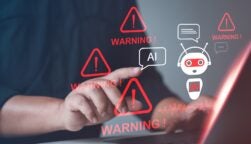For millennial smartphone owners, the “blue texts vs. green texts” cold war between mobile tech heavyweights Apple and Android may seem as if it has no end.
However, as the latest iOS model rolls out this week, everything is about to change.
The iOS 18 beta 2 update is here, and it includes the debut of Rich Communication Services messaging, or RCS. With this protocol replacing Apple’s long held dependance on Short Message Service (or SMS), iPhones everywhere are now a lot more compatible with receiving data from Android. Here’s what new functionalities iPhones are unlocking.
What’s Changing With RCS on iPhones
The full details of the shift in messaging protocols haven’t been released, but beta users are already discussing what they’ve experienced, and Apple has confirmed some elements of what you can expect when you download the update for yourself.
For the first time, iPhone users with the latest iOS will be able to get these benefits when receiving incoming texts from Android devices:
 This just in! View
This just in! View
the top business tech deals for 2026 👨💻
- High-quality photos and videos can be received from Android devices, replacing low-res and grainy media.
- Read receipts and delivered receipts will be available for texts sent to Android devices.
- Typing indicators will let you know when your Android-using friends are drafting a response to you.
However, the one big change everyone was hoping for is not coming: You’ll still see green bubbles surrounding Android texts.
Green Text Bubbles Won’t Go Away
That’s right: Even after this new protocol change, texting fellow iPhone users and texting your Android-equipped friends will still be two separate experiences.
This is because iMessage is still only available to iPhone users, and it’s what’s behind the blue bubbles that differentiate your messages from all the non-iMessage texts that remain within green bubbles. In other words, the great text bubble cold war will continue apace.
The new functionality listed above is great to have, but some extra iMessage-related tools won’t be rolling out to all RCS texts: You (likely) won’t be able to edit or unsend RCS texts like you can with iMessages.
Plus, we haven’t gotten any confirmation that RCS texts will have end-to-end encryption like iMessages do, so that seems unlikely as well.
When Will Your iPhone Get RCS Texts?
The new iOS is still in beta, so regular users like you or me won’t be experiencing the shift from SMS to RCS any time soon. It’s not far away, though; according to reports, the new update is set to roll out with the release of iOS 18 in Fall 2024.
Apple typically has to be forced into consumer-friendly choices like messaging compatibility — most famously, EU regulations tipped Apple’s hand several years ago and forced the tech giant into swapping out its proprietary lightning port with the universal-standard USB-C.
For the time being, however, green and blue bubbles will have to keep coexisting on iPhones everywhere.




